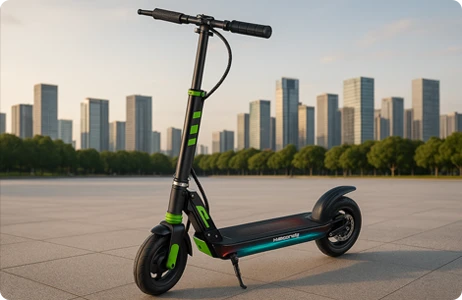Global Scooter Industry Booms: Innovation and Sustainability Drive Market Growth
As urban congestion and environmental concerns escalate, the scooter industry has emerged as a key player in reshaping short-distance mobility. According to the 2025-2030 Scooter Industry Analysis Report , the global electric scooter market is projected to reach $55 billion by 2033, with a compound annual growth rate (CAGR) of 8.35% . China, a manufacturing powerhouse, leads this transformation, contributing over 42% of global production capacity, while brands like Ninebot and Xiaomi dominate international sales.
Technological Innovation Redefines User Experience
The launch of Ninebot’s third-generation electric scooters—E3, E3 Pro, and the flagship F3—has set new industry benchmarks. These models integrate Segride Stabilization Technology, TCS Traction Control, and AirLock Proximity Unlock, achieving speeds of 32 km/h and a maximum range of 55 km. The F3 series features a TFT smart dashboard with navigation and real-time data display, blurring the line between scooters and smart mobility devices . Such advancements align with the industry’s shift toward intelligence and connectivity, as highlighted in the 2025-2031 Intelligent Electric Scooter Market Report .
Regulatory Frameworks and Green Policies Fuel Expansion
Global regulatory bodies are tightening safety and environmental standards. The U.S. ASTM F2641-23 mandates speed limits (≤32 km/h) and lithium battery safety certifications (UL2272) , while the EU’s EN 17128 standard emphasizes mechanical stability and IP67-rated waterproofing for scooters. Meanwhile, China’s GB/T 42825-2023 technical specifications have accelerated domestic product standardization . These policies, coupled with subsidies for low-carbon transport, are driving scooter adoption in over 100 countries, particularly in Europe and North America .
Shared Mobility and Youth Culture Reshape Urban Transport
The rise of shared e-scooter services has revolutionized last-mile connectivity. Companies like Lime and Mobike now operate fleets exceeding 1 million units globally, with the Asia-Pacific region accounting for 45% of shared scooter users . Notably, 60% of riders are aged 18–34, valuing scooters for their affordability (average rental: $0.15/minute) and eco-friendliness . In China, cities like Beijing and Shenzhen have integrated scooters into public transit systems, reducing carbon emissions by 12% annually .
Future Outlook: Toward Sustainable and Intelligent Mobility
Industry experts predict that battery advancements (e.g., solid-state batteries) and AI-driven navigation will dominate R&D efforts by 2030. Ninebot’s collaboration with Segway on autonomous scooters and Navimow’s smart lawnmower ecosystem exemplify this trend . Additionally, the integration of solar charging stations and IoT-enabled maintenance systems promises to enhance operational efficiency .
As the world embraces compact, green transit solutions, the scooter industry is poised to redefine urban mobility, blending innovation with sustainability.
Previous:No
Next:Electric Vehicles: Driving the Future of Sustainable Mobility
 BACK
BACK










